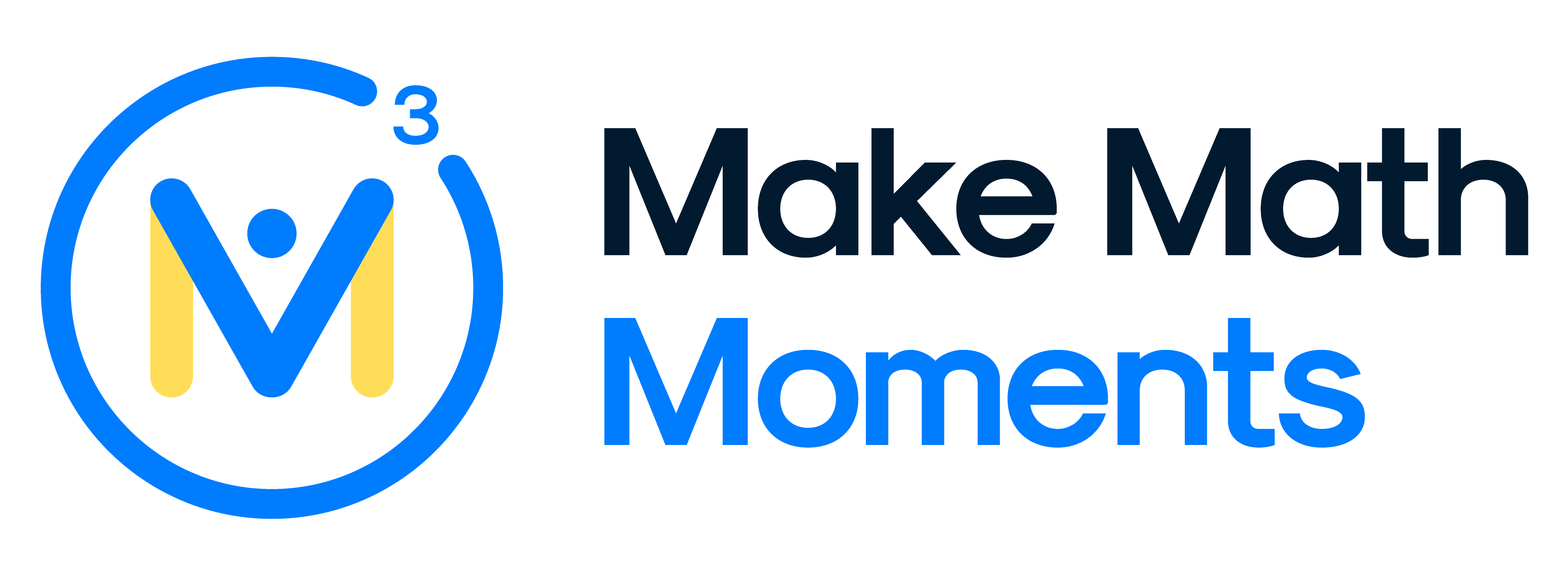Make Math Moments From A Distance
-
Sparking Curiosity From A Distance [Webinar Replay]6 Lessons
-
Make Math Moments From A Distance [Webinar Replay]7 Lessons
-
2-1 - Introduction to Making Math Moments From a Distance
-
2-2 - Spark Curiosity Through The Shot Put Task
-
2-3 - Using The Curiosity Path From A Distance
-
2-4 - Fuel Sense Making With Knowledgehook SnapShots
-
2-5 - How to Fuel Sense Making From A Distance
-
2-6 - How To Ignite Your Teacher Moves From A Distance
-
2-7 - Q&A Session
-
2-1 - Introduction to Making Math Moments From a Distance
-
More Tech Tool Deep Dives [Coming Soon]
-
Tech Tool Deep Dive: Knowledgehook9 Lessons
-
3-1 - Introduction
-
3-2 - Introduction to Knowledgehook
-
3-3 - Follow The Curiosity Path With Gameshow
-
3-4 - Crafting a Productive Struggle With Gameshow
-
3-5 - Using the Upload Focus Feature to Consoliate Learning
-
3-6 - Reporting Tools and Self-Paced Missions for Purposeful Practice
-
3-7 - Creating a Custom Activity in Knowledgehook
-
3-8 - Creating a Class, The Teacher Dashboard, and More!
-
3-9 - Knowledgehook Q&A
-
3-1 - Introduction
-
Tech Tool Deep Dive: Desmos8 Lessons
1-1 – Introduction to Sparking Curiosity From A Distance
What You’ll Learn
- An introduction to the webinar including why it is important to Spark Curiosity especially now that we are forced to engage in learning from a distance.
Make Math Moments Academy › Forums › 1-1 – Introduction to Sparking Curiosity From A Distance – Discussion
-
1-1 – Introduction to Sparking Curiosity From A Distance – Discussion
Posted by Kyle Pearce on May 29, 2020 at 7:08 am“What new take-aways do you have?
What questions are you still wondering?
Share your thinking below…”
Kyle Pearce replied 3 years, 4 months ago 23 Members · 43 Replies -
43 Replies
-
My biggest take-away is to use visuals for students and for representations more often.
-
Yes indeed! Help promote their use and ask purposeful questions to assist in emerging more strategies for us to build on during consolidation!
-
-
I’m glad you guys took time to try and tackle this question. I can see why you would partner with braining camp.
-
Glad you feel that way! Yes, Brainingcamp is pretty awesome.
If you head to the Toolkit area, we have some discount codes including one for Brainingcamp… so check it out if you’re interested!
-
-
I love the visual of how we learn. You have used it before and it is such a great representation of what we see in our classroom. Going into a new school year after the virtual learning, which was really pandemic teaching and not necessarily quality or covering all standards, the visual has me thinking about where students will be. For many I am sure the disruption in learning shifted the path they are on. Teachers are expecting this. We know how to adjust our teaching and work with students on different paths. We are able to anticipate misconceptions and know what to ask and what to look for to understand student thinking and plan next moves. As I look at the visual I wonder about new paths that virtual learning has created. What won’t we be anticipating? What uncharted paths will we be navigating with students next year?
-
So happy that the visual resonated.
You’re so right as we head into the fall in a situation that none of us have ever been in. This is all the more reason why we need to shift our teaching practice from a procedures first approach to a problem solving and concepts first approach.
If we don’t, we are sure to be spinning our wheels even more than we have in the past!
-
-
Thinking about the various places students come to us, I know that my students that are coming from other countries will have wildly different school experiences and that will affect how they will absorb the learning I offer. Making those experiences visible and more in line with the experiences they see in the world seems like it will make a difference for them
-
Hi! I love this. I appreciate that you guys are taking a step back and starting with the basics. My big take-away is the availability of brainingcamp. First I had heard of it.
More of a curiosity that I believe will be discussed later, What does it look like to create an online/remote lesson that has a low floor?
And what would be a good way to approach assessing your students mathematical abilities from a distance? Excited to keep learning.
-
Glad you’re getting some early take aways… and yes; we will be diving into how to use low floor and high ceiling tasks shortly 🙂
-
-
We are all in the same boat…each of us will design something that works for us and for our students but it is very helpful to learn all we can about different strategies so that we have a variety of tools to choose from. My county has students going into the classroom 1 day a week and learning remotely but as synchronously as possible the other 4 days…me teaching and it being streamed for the kids at home…a new adventure!
-
I’d be curious to know the thought behind the 1 day a week model. Is this a rotation so 1/5 of students will attend each day?
-
-
New take-away… Math Before Bed. You are correct. Parents are encouraged to read to their children before bed, why not do math?! Wish I had this idea when my kiddos were young. 👏🏼
-
I am certainly that kid on the slide! I am starting the new year distance learning and I am anxious. I teach 6th grade in a self-contained elementary classroom. I believe that many of our middle-grade learners still struggle with the foundational skills that are taught in the earlier grades. I will be taking a peek at both your sites. I think there might be some fortuitous finds there to help me reach them.
-
Well we are confident that this course will help along that journey!
I agree regarding the fundamentals and students not being as flexible and fluent as we would like. Be sure to check out our problem based units in the task area of this site as we focus on building conceptual understanding as well as fluency and flexibility with numbers & operations!
-
-
My take away is that we can spark students interest from a distance.
-
I am a little nervous but also excited about starting school. Learning the tools and help that you are providing us is making this easier, but now I just have to take a deep breath and dive in. Not knowing what skills the students coming up to 8th grade have, I really like the idea of the activities based learning to start the class will help build their confidence (and mine).
-
So glad to hear it. I think we are all a bit anxious about possibly entering into another school year via distance learning, but with some of these tools in our tool belt, we can do our best to Make Math Moments From A Distance each day!
-
-
I’m very eager to learn how to do problem based lessons remotely. Can’t wait!
-
I am excited to find a way to motivate my very unmotivated students. We used to have a program that was more problem-based, but unfortunately, the teachers found it intimidating to be in the role of facilitator. They also had to have deeper content knowledge. I’m ready to do this on my own if necessary!
-
It can certainly be scary especially without support. Hopefully this course will help you get started and stick with it. Let us know how things are going as the school year gets under way!
-
-
How to deliver problem based lesson during the covid 19 era? the new year is in less than a month, and I never felt so unprepared to face my students.
-
Keep us posted on whether we were able to help you with this challenge as you dive deeper into this course. I think it should give you some more ideas and confidence to move forward!
-
-
I have never hear of Braining Camp, so I am excited to see what that has to offer.
I am still wondering how do I start a school year and establish my classroom norms and procedures AND spark curiosity for big math tasks in students from a distance/computer.
-
Math Before Bed is new to me. I am thinking how I might use this to encourage parents to be more involved with their students education. I wish I had something like this when my own children were in school.
-
I wonder about how to come up with the ideas to create the curiosity in students. Last Spring, I completed all the Zearn lessons (minus listening to the lessons) from 3rd to 5th grade. I noticed that what my students struggled with in fractional understanding in the fifth grade was really 2nd, 3rd and 4th grade standards. Some students do not understand what fractions are. I was thinking that maybe I would start with numbers and operations in Fractions this year beginning with what is a fraction and students being able to draw mathematical drawings of fractions. So what could be the “spark” to encourage curiosity in students? I am imagining putting up a number line labeled with whole numbers. Ask: Are there any other numbers?
What do you think? Maybe you have a better idea. Let me know. Miriam
-
There are some great fraction activities in Desmos. The activities allow students to play around with the visuals and there are some that connect a part/whole model to the number line. If you go to teacher.desmos.com and search Fraction you will find them.
-
Aside from the activities in Desmos if you want to make your own Kendra Lockman has some great tools on her blog. She has a page called Desmos Toolbox that has many precreated visuals that can be copied and pasted into a Desmos activity. https://fractaliannature.blogspot.com/p/desmos-toolbox.html She also has some great activities under her Activities tab, in case they don’t come up in the Desmos search (the search box in there is weird). https://fractaliannature.blogspot.com/p/activities.html
-
-
Marilyn Burns at Math Solutions has a great lesson on fractions called The Lobster Problem. It is a great way to get students to work with fractions.
-
The lobster problem actually is using decimals (perhaps it could be adapted to using fractions). Here is the link: https://mathsolutions.com/ms_classroom_lessons/the-lobster-problem/
-
Fractions are one of those concepts that both students and teachers aren’t huge fans of. Often times, they are taught in a “unit” at a particular time in the year instead of used throughout the year, where appropriate.
I might consider starting with area (vs linear models) to start the year off.
A great start might be the new Scavenger Hunt Unit that we posted in the tasks area of the Academy. Have you checked it out yet?
https://learn.makemathmoments.com/task/scavenger-hunt
-
-
-
I just want to figure a plan of how to teach in the hybrid model in a creative manner. There is so much change and such a new process that I believe that I will struggle (which is expected). I am hoping that these modules will help plan and figure the best way to approach teaching math lessons.
-
I think it will give you a good sense of what you might expect and how you might plan and anticipate moving forward. Do keep us updated!
-
-
I’m teaching in a virtual school this year. I’ve always thought math has to be visual so the first thing I did was buy a document camera so I can “show” the math. Now I’m looking for ways to make teaching and learning online engaging and real and I’m looking for good online assessment too. We work with some interesting parameters (eg. there must be a “video” of every lesson taught) (each subject only has two synchronous lessons per week) so I’m always looking for ways to teach that will fit our different parameters.
-
Hi there @wendy-Joevenazzo , It sounds like you’ve got a great plan for your situation. What resources have you found to be most useful so far?
-
-
I like the segment talking about the different learning paths and rates of progression each student takes. I feel like this is a much easier concept to keep track of in a “physical” classroom than a virtual one. Keeping track of student progress and finding the best individual avenues to success is really hard when we’re not in the same room as our students
-
This is so true. Being at a distance certainly introduces many barriers to keeping up with formative assessment. If you can find time for breakout rooms for small group instruction, that can be helpful for closing that face to face / distance assessment gap.
-
-
I love the video clips. No questions right now, thank you.
Log in to reply.


